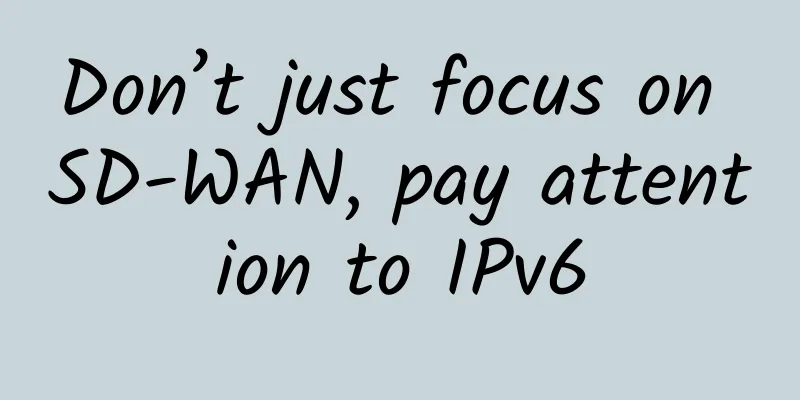SD-WAN first or security first?

|
The right secure access service edge (SASE) architecture can enable enterprises to ensure that users have direct and secure access to cloud-hosted applications and services, regardless of where they are located or what device they are using to access them. The Internet of Things also needs to adopt SASE to solve security issues. Transforming the overall business driver of WAN and security architecture to SASE can provide users with the best application quality experience. Getting Started with SASEWhen an enterprise embarks on a SASE journey, it can start with SD-WAN or cloud security, or both. But people may not want to be forced to transform both at the same time - they want to transform these architectures based on their needs and progress. Enterprises can first evaluate their WAN and security requirements based on business needs:
SASE evaluation and proof of concept testingNext, enterprises need to evaluate the SD-WAN and security capabilities of various vendors. Many enterprises do need to adopt best-in-class WAN technology and cloud-delivered security without compromising the integrity of either. But it is unlikely to find a vendor that excels in both areas. According to a recent Ponemon Institute Security Best Practices Survey of more than 1,800 network and security IT professionals, more than two-thirds of IT teams want to adopt best-in-class network and cloud security for SASE. More than 70% of respondents expressed a desire to integrate multi-vendor services to simplify deployment and ongoing operations without compromising network or security capabilities. Integrated Automation Orchestration for Best-in-Class Performance Advanced, open SD-WAN platforms that support application programming interfaces (APIs) can bring new levels of automation to seamlessly connect best-of-breed cloud security services now and in the future, avoiding vendor lock-in and compromise. SD-WAN platforms support foundational security features at the branch, such as zone-based firewalls and segmentation, enabling enterprises to migrate to SASE architectures at their own pace. Driving business value - the ultimate goal of SASEThe only reason for an enterprise to transform its network and security architecture is to drive business outcomes. Otherwise, why embark on a SASE journey and pay the associated costs? Incremental business value can be achieved using SASE:
|
<<: Why 5G won’t replace Wi-Fi 6 at the edge anytime soon
>>: Contact centers meet the needs of more connected customers
Recommend
The first commercial 5G mobile network in the United States is here! Verizon, a US telecom operator, enters the market
U.S. telecom operator Verizon announced on Wednes...
How to configure PoE switch settings with NVR?
All modern video networks use IP cameras. IP came...
What is blockchain and what impact does it have on data centers and cloud computing?
Today, more and more applications are causing the...
[CyberMonday] DediPath Los Angeles VPS 50% off starting at $10/year, dedicated server starting at $45/month
DediPath has launched a Cyber Monday promotion....
5G! Your future is unimaginable
Nowadays, 5G seems to be like the swallows flying...
10gbiz: $2.75/month KVM-1GB/50GB/2M unlimited/Hong Kong (CN2 GIA) data center
10gbiz is a hosting company established in 2020. ...
Five reasons why the Internet of Things needs its own network
【51CTO.com Quick Translation】Last week, AT&T ...
Top 10 predictions for the IoT industry in 2018
The IoT industry had a brilliant year in 2017. So...
In-depth Explanation: What is "Time Granting"?
[[340662]] This article is reprinted from the WeC...
Why use MAC address when we have IP address?
The IP address and MAC address can be compared to...
The Why and How of a Two-Tier Network Monitoring Topology
As data centers upgrade to 100Gbps at an accelera...
Hengchuang Technology 11.11 Super Value Purchase: Overseas cloud servers start at 264 yuan/year, independent servers are 50% off and 10M bandwidth is given
Hengchuang Technology (henghost) has sent the eve...
Research and Markets: Global 5G system integration market size will reach US$45.5 billion in 2027
On April 20, according to foreign media reports, ...
The mobile phone number card market is too difficult to operate. Why is it so difficult? What should we do?
Yesterday, I was chatting with a friend who works...
VMISS 30% off, Hong Kong CN2/Korea CN2/US CN2/Japan IIJ monthly payment starts from 3.5 Canadian dollars
VMISS is still offering a 30% discount this month...









